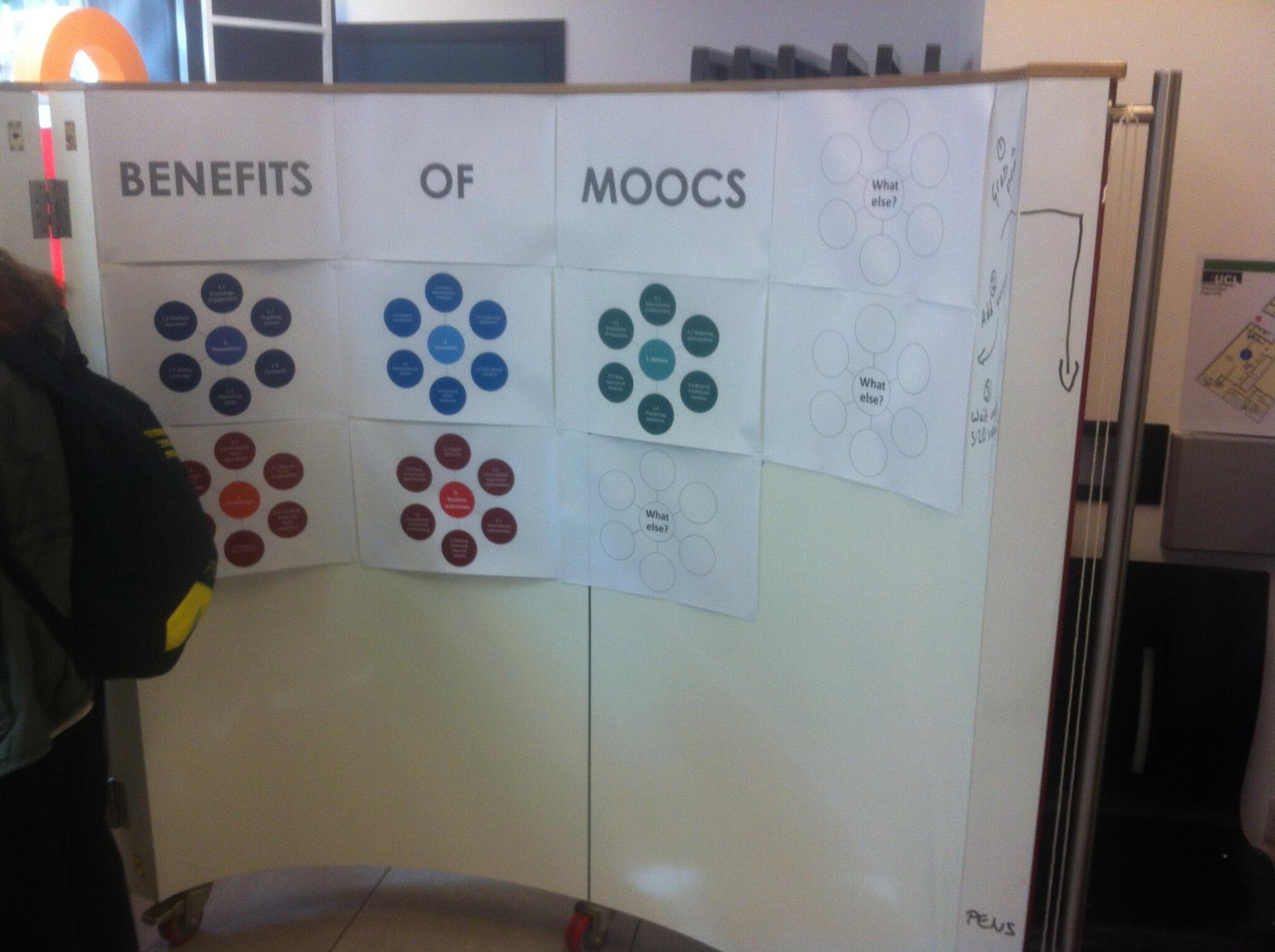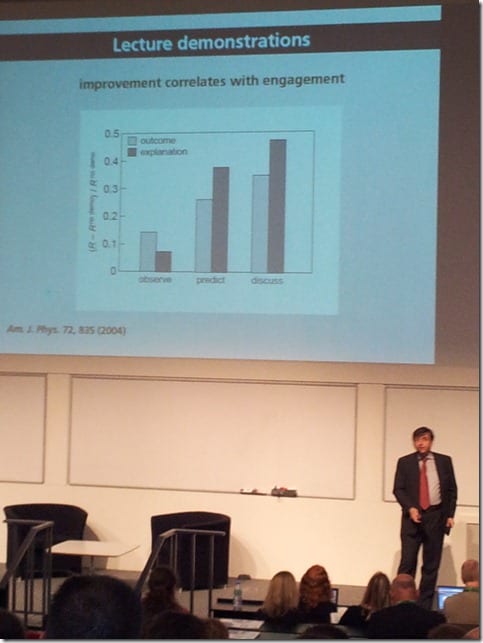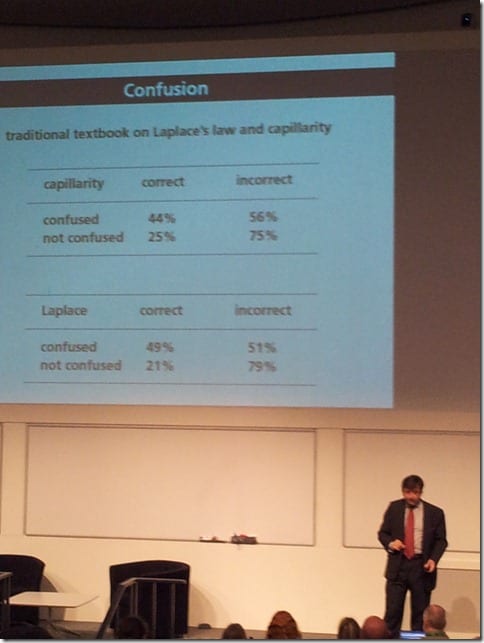 ALTC (Association for Learning Technology Conference) is a valuable and strange conference – an event for anyone active in learning technology to come together and share experiences, views and personalities. With 500 people attending this year, ‘there’s always so much to see’ is a statement from everybody. And yet within this wide selection, we all curate a path through and try to get as much as we can.
ALTC (Association for Learning Technology Conference) is a valuable and strange conference – an event for anyone active in learning technology to come together and share experiences, views and personalities. With 500 people attending this year, ‘there’s always so much to see’ is a statement from everybody. And yet within this wide selection, we all curate a path through and try to get as much as we can.
My experience is likely similar to many others; I go with my profession in hand and choose topics based on my background and interests. I try to see sessions, and meet people, that align to these. I was happily surprised, however, to note that there was not much on distance learning, even less on ‘lifelong and continuing’ education and so therefore I was exploring outside my box – and seeing how I could fit it in.
Digital storytelling
Digital storytelling provides an approach and platform for people to share an experience to a group, via a digital medium. Storytelling predates writing and remains on many cave walls from millennia-past, sharing early experiences for others to see and learn about. Stories are integral to the development of civilization; creating and telling stories can be a highly authentic, personal and social experience, so one would hope they have value place in education. Except that the digitization of stories seems to remain a lesser-hero in higher education at the moment, although it is happening in some sectors – but I hope it’ll continue to grow in popularity. The value seems immense, even if the term ‘story’ is perhaps childish or too informal.
Sarah Copeland shared with the ALTC group about what digital storytelling (DST) and community digital storytelling (CDST) is and how she’s using it at Leeds Beckett University and in community groups in rural Yorkshire. Dr. Copeland shared the five principles of DST/CDST and it seemed that even one of these phases can be an important and enriching experience for a learner:
- Preparation – collate and structure what’ll be in the story
- Storytelling – bring everything together and shape it into a story
- Story digitisation – digitise the story and build it in a platform or capture with a device
- Digital story sense-making – reflection on the story, self-evaluate and review
- Digital story sharing (tricky if containing highly personal info) – share with others, on platforms or in groups.
In each of these phases a learner must go through a series of actions, reflections and sometimes quite social experiences that pave a strong way forward for a rich learning experience. It was important to highlight that digital storytelling is not a technology-based pedagogy, although it relies on the digital for some of the phases, the core activity could is not dominated by a certain tool. Digital storytelling in itself is an artifact and a transformative process – the idea is to couple narrative with a digital platform/environment. Community Digital Story Telling (CDST) adds an extra layer as it is also a social element; asking people to share their context, using a digital platform to provide a focus and helping to remove awkwardness for people to share their stories/views.
While Dr. Copeland suggests CDST/DST has to be small scale and to retain the authentic capturing of people I felt perhaps it could be countered against the ongoing effort to scale up education. Within increasingly large cohorts an institution can slip into neglect for personalisation for each individual. DST could help to provide an approach, or platform, to return the locus of learning upon the person and perhaps this goes some way to leveling an expansive playing field.
Inclusivity
Laura Czerniewicz really highlighted how ALTC can have an impact by sharing her views on inequality as higher education goes online. While the world struggles to balance societal equality (and seemingly failing to achieve a positive trend), higher education remains firmly within this challenging balance. Everyone deserves to be educated and when they do, their lives, and peoples around them, tend to always improve. Society should make education increasingly available, to more people, as time goes on.
While countries like the USA and many in Europe are investing increasing amounts in the EduTech boom it comes with a western-oriented emphasis on technology in society. Luckily, different cultures do not all work the same but this diversity is at risk of becoming lost, or overshadowed within technology. It seemed to me that while Silicon Valley is producing a lot of great innovation, that localization and local developments in other countries remain paramount as to harness the transformative power of the information, and digital age.
Prof. Czerniewicz highlighted that universities and academics in Africa do not have the resources to work on ‘good things’ (like Moocs) they must focus on solving real problems. I suspect that projects such as Wikipedia Zero (free mobile access to Wikipedia on certain mobile networks and countries) sets a better direction than any MOOC platform has so far. Moocs use high-bandwidth media and inflated social interactions, well bandwidth is expensive and slower in many other countries, so only the privileged few can access them.

Map of 3G & 2G coverage of Africa – speeds can reach approx. 1.5Mbps

Map of 4G coverage of Africa – speeds can reach approx. 10Mbps – much faster, but no one’s has it!

Map of 3G and 4G across Europe – speeds can reach 10Mbps – 20Mbps
(all maps taken 11 Sept 2015 from Opensignal.com)
The number of number of mobile subscriptions is rapid and far more numerous than that of broadband. Mobile connectivity is the future of globalised internet access. Yet in developing countries the State of Connectivity 2014 Report notes that only 20% of the population can afford a 500MB monthly data plan for their mobile device; 90% can afford 20MB monthly; which doesn’t equate to any other bulk download of media other than text. So that’s not fair and it must be resolved, but are we reliant on the mobile networks to resolve this inequality? Sure we could give people more money, but I know when I am roaming I switch off data due to the cost; the problem is systemic; you’re offline. My view is if we fix this technology problem, we might solve a societal issue. What power!
Digital storytelling and inclusivity
Linking data to stories – I can’t shake the idea that networking everyone and sharing stories would be a good thing. For too long digital networks have been centralised rather than personalised. Digital stories could be highly inclusive; by design their output is an opportunity for an individual to express and share. Mobile devices are an extension of our need, and desire, to be social. Let’s combine them.
Imagine, as a closing thought, we introduced cheap data and storytelling into the global migrant crisis. Each person sharing their story, accessing the information they need, reporting back home and learning the new language so they can make home in new lands. In addition, as they travel, that they curate their story, their reason for leaving, the ongoing change, struggles and hopes for the future. It might not seem educational – perhaps it’s more basic & functional – but for everyone else it could be a chance to learn from perspectives of people who could soon become their neighbour.
Further info / reading
Sarah Copeland, DST and CDST – ALTC talk
Laura Czerniewicz, Inequality as higher education goes online (slides from ALTC keynote – video of ATLC keynote)
 By joining the 2023 Bloomsbury Learning Exchange (BLE) Cohort and working towards CMALT accreditation. You may be a tutor, a PGTA, an ELO, a TA, a Librarian, a Learning Technologist, etc. Anyone in fact, who is a staff member at one of the institutions affiliated to the BLE (namely, Birkbeck, LSHTM, RVC, SOAS, UCL, City, University of London and UoL) and has been using technologies effectively to teach or support teaching and learning. Indeed, since the pandemic hit many more staff at UCL have been doing just that.
By joining the 2023 Bloomsbury Learning Exchange (BLE) Cohort and working towards CMALT accreditation. You may be a tutor, a PGTA, an ELO, a TA, a Librarian, a Learning Technologist, etc. Anyone in fact, who is a staff member at one of the institutions affiliated to the BLE (namely, Birkbeck, LSHTM, RVC, SOAS, UCL, City, University of London and UoL) and has been using technologies effectively to teach or support teaching and learning. Indeed, since the pandemic hit many more staff at UCL have been doing just that. Close
Close















